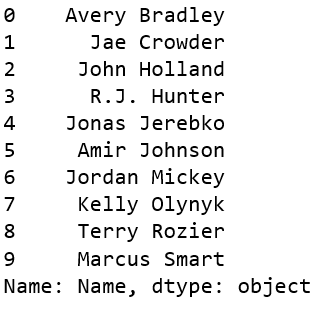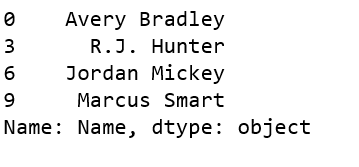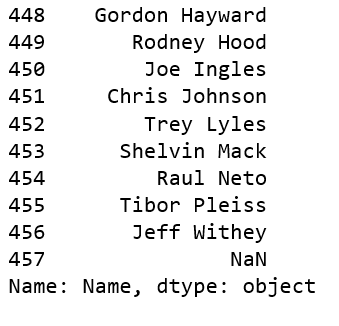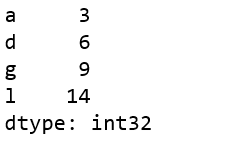Access the elements of a Series in Pandas
Last Updated :
06 Dec, 2018
Pandas Series is a one-dimensional labeled array capable of holding data of any type (integer, string, float, python objects, etc.). Labels need not be unique but must be a hashable type.
Let’s discuss different ways to access the elements of given Pandas Series.
First create a Pandas Series.
import pandas as pd
ser = pd.Series(df['Name'])
ser.head(10)
|
Output:

Example #1: Get the first element of series
import pandas as pd
df['Name'].head(10)
ser[0]
|
Output:

Example #2: Access multiple elements by providing position of item
import pandas as pd
df['Name'].head(10)
ser[[0, 3, 6, 9]]
|
Output:

Example #3: Access first 5 elements in Series
import pandas as pd
df['Name'].head(10)
ser[:5]
|
Output:

Example #4: Get last 10 elements in Series
import pandas as pd
df['Name'].head(10)
ser[-10:]
|
Output:

Example #5: Access multiple elements by providing label of index
import pandas as pd
import numpy as np
ser = pd.Series(np.arange(3, 15), index = list("abcdefghijkl"))
ser[['a', 'd', 'g', 'l']]
|
Output:

Like Article
Suggest improvement
Share your thoughts in the comments
Please Login to comment...